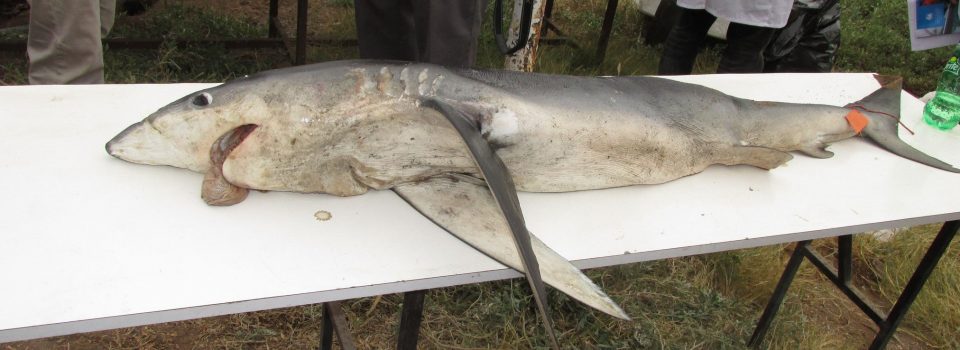Manta rays and Sharks, current situation in Chile is analyzed by experts at workshop
July 25th, 2016The mobulas are giant rays and the inclusion of these species into Appendix II to CITES (Convention on International Trade of Endangered Species of Wild Fauna and Flora considering) is being considered.
 In Iquique, the sharks working group hold a meeting. This is part of IFOP project “logistical support for the development and management of regional action plans and programs of aquatic species conservation and adaptation to climate change in fisheries and aquaculture”
In Iquique, the sharks working group hold a meeting. This is part of IFOP project “logistical support for the development and management of regional action plans and programs of aquatic species conservation and adaptation to climate change in fisheries and aquaculture”
The purpose of this meeting is to analyze the planned amendments to the list of shark species that are being proposed to be incorporated into CITES; the silky shark (Carcharhinus falciformis), giant manta rays (mobulas SPP) and thresher sharks (Alopias SPP).
Patricio Barria, President of shark group, explained “this working group advises the scientific committees of the Undersecretary; we are analyzing the scientific background and the reasons for the incorporation of manta ray species to Appendix II of CITES, we also advise Servicio Nacional de Pesca, regulatory organization in CITES issues in Chile, who will attend the meeting conference of parties to be held in Johannesburg between September 24 and October.”
The marine biologist said “the incorporation of these species to Appendix II of CITES means that the export of these species worldwide is restricted and each country member shall demonstrate that their captures are not interfering with conservation of natural populations of these species”
Antonio Palma, professional of Sernapesca, said “during the conference of the parties, a series of documents are scanned, one of them are the proposed amendments, these are amendments to CITES appendices, incorporating species or removing others. In this case, as representatives of Chile, we are making amendments to the proposals to incorporate all mobulas, in addition to silky sharks and thresher sharks.
The analysis begins with a scientific study of the proposals, which are documents previously delivered to the commission for discussion; this meeting here in Iquique has that purpose; that is, to examine whether these amendments meet the criteria to support or reject them.”
Francisco Ponce of Subsecretaría de Pesca said “our work today focuses on analyzing the scientific information we have on these species and the existing information worldwide, we are analyzing the tarapacana and japanica mobulas species and other species of giant manta rays. The presentations are made by the countries based on the information they handle and they ask the other country members to examine the background, and based on that, we vote in CITES. ”
On Mobula (giant manta rays)
Dr. Fidelina Gonzalez, academic at the University of Concepcion, said “they are Chondrichthyes species, or vulnerable cartilaginous fish from the point of view of conservation, mainly due to ignorance of the biology of this species, their life cycle, especially reproduction period and reproductive behaviors. Reproductive behavior has been defined as genetic subdivision, which should be considered when defining possible management measures for the fishery. They have a long gestation period, delayed age of first maturity, low number of offspring (one per gestation) localization of juvenile, hatchlings and adults.
The species that inhabit the coast off Chile in the Pacific Ocean, are two, Mobula tarapacana tand Mobula hurstoni. The first is distributed farther north than M. thurstoni. A third species, japanica Mobula, has reported a dead specimen against Bahía Inglesa.
In Chile, there is no fishery for Mobula, but could be caught by other fisheries incidentally. “
